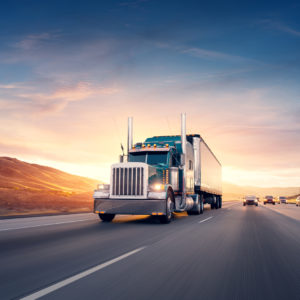We’re in the midst of a revolution in moving people as well as goods. With just a few clicks, whatever we want or need shows up on our doorsteps, often within a day or two. Our cars are smarter and becoming self-driving. For short trips in many cities, we can jump on bikes and scooters we see on the sidewalks and then rely on our phones to do the rest. Technology is also transforming trucking, which of course, undergirds the whole domestic shipping supply chain.
Over the next 30 years, the tonnage of goods transported around the country is projected to grow 40 percent and the value of those goods could nearly double. As technology creates more precision and efficiency in shipping goods, the trucks themselves need to keep up. Trucks move 70 percent of domestic cargo. We need to make sure truck configurations not only track with changes in supply chain logistics and technology but also infrastructure and environmental challenges that come with a growing population.
That is where Twin 33s enter the picture. Twin 33s are tandem trailers of 33 feet in length each. Twin 28s have become a common sight, as they are currently allowed the national highway network. Some states permit goods to be transported in Triple 28s, and others even permit Twin 53s on their roadways. Twin 33s, however, can only operate in 20 states. We need to allow them in all 50 states.
To be sure, population density, topography and other factors enter into decisions about what truck configurations are suitable in individual states. However, when it comes to Twin 33s versus Twin 28s, there is a distinction without a difference. Having Twin 33s transport goods in all 50 states makes a lot of sense for several reasons.
One is efficiency. As the country’s population grows, the demand for goods will grow. With today’s demands for customized and faster delivery, shippers need flexibility. While Twin 33s are particularly important for less-than-truckload (LTL) carriers and parcel operators, the use of these trucks nationwide would be an important and positive development for the entire shipping and transportation system. The extra five feet in trailers helps shippers load trucks for additional deliveries on single trips. More efficiency means lower costs for consumers at the end of the line. Plus, with more efficiency, there is less fuel consumption. It is estimated that the nationwide use of Twin 33s could reduce fuel consumption by some 204 million gallons a year. And with less fuel consumption, there will less carbon going into the atmosphere.
Another reason is infrastructure. The nation’s roads and bridge have a lot of problems. The congestion and delays this causes can be very expensive. The widespread use of Twin 33s would alleviate some of that strain on roads and bridges. In fact, within the segment of the industry using twin configurations, the national usage of Twin 33’s could reduce the number of tractor-trailer rigs on the road by 18 percent. If there was ever a time to reduce the burden and congestion on our roads, it is now.
With President Trump’s call for $1 trillion in infrastructure investments in the coming years and broad bipartisan support for this endeavor, we could see many needed projects finally get under way. As our interstates improve over time, Twin 33s will be integral to more efficient and environmentally-friendly transport of goods. Both now and in the future, fewer trucks on the road will mean less strain on highway surfaces, and safer, less congested travel for everyone.
Indeed, safety is the other compelling reason to enable the use of Twin 33s in all 50 states. While the prospect of larger trucks could prompt concerns about safety, there is solid evidence that Twin 33s would actually help make our highways safer. They are less prone to rollovers and are involved in few accidents on average than other trucks.
It makes no sense to limit these benefits to 20 states. If Twin 33s could operate in all 50 states, trucking companies and others involved in freight transport could reap even greater benefits in efficiency, with consumers being the ultimate winners. The reduction in fuel consumption, congestion, wear and tear on the roads, and pollution will benefit everyone. Congress should seize its first opportunity to make this long-overdue change in regulatory before the end of the year. It would be a small but important step in harmonizing the technology, infrastructure and means of shipping for the evolving needs of a growing nation.

